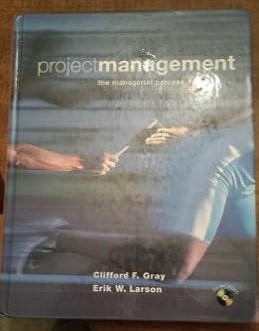Question
Instructions: Explain the following in a way that it can be undesrtand by everyone TOPIC: RISK IDENTIFICATION Listed below are a range of steps that
Instructions: Explain the following in a way that it can be undesrtand by everyone
TOPIC: RISK IDENTIFICATION
Listed below are a range of steps that a risk management working group could use to identify the risks your organization faces. This is a useful way to begin documenting what you find out as part of your risk management plan. As you identify the various risks your organization faces, writing them is necessary.
1. Inspecting The Site Look around your workplace. What potential risks can you find? Look at the workplace from the perspective of the different people who use it. Are there hazards for children, older people, or people with impaired sight? What are fire hazards? Are there loose electrical connections, or damaged furniture? How hot is your hot water, and how accessible is it to children? Take some photos, perhaps even a video if you can, and study it closely. It is a good idea to have a couple of people who make the site inspection so that you can compare notes.
2. Reviewing Your Organization's Work Practices
The activities carried out in your organization will have varying degrees of risk. make staff members work with potentially dangerous clients? Is staff required to perform physical activity which may result in injury (for example, lifting clients)?
Is your organization's work particularly stressful? Is the staff required to make a lot of driving, and if so, are they using their cars, your organization's cars, or both? Review your work practices from the perspective of other people who use your service. Are clients exposed to risks from other clients, people off the street, or other sources? What about volunteers and management committee members?
3. Explore Your Legal Exposures
Your organization may be exposed to some legal risks associated with issues such as workplace health and safety, liability to clients, judiciary duty, or anti discrimination legislation.
4, make A "What If" Analysis
For example, what if: Your organization's coordinator or manager had a serious accident tomorrow? Your organization's files were burnt or stolen? You discovered someone had embezzled several thousand of money? There was a major industrial accident? Industrial action was taken? Racial discrimination occurred in the workplace? Your organization was sued?
5. Talk To Staff
The people whomake the work often have the best idea of the risks the organization faces. Talking to the staff can occur through individual
Step by Step Solution
There are 3 Steps involved in it
Step: 1

Get Instant Access to Expert-Tailored Solutions
See step-by-step solutions with expert insights and AI powered tools for academic success
Step: 2

Step: 3

Ace Your Homework with AI
Get the answers you need in no time with our AI-driven, step-by-step assistance
Get Started


